Museums have always been great tourist spots. You visit them to gain knowledge, or to spend leisure time, or just to marvel at the artifacts. And to keep visitors engaged, museums should fulfill their purpose of visit.
But lately, museums have started finding it difficult to keep the visitors engaged. Why?
Because most visitors now spend time looking at their phones rather than experiencing the history or art around them.
Does that mean museums have become a thing of the past? Well—no!
They just need to tap into the interests of their audience and get them to enjoy visiting the museum. How?
It’s quite simple actually. People are always using their smartphones, right? Then how about getting them to use it to make the most of their visit?
Yes, you can actually do that. In fact, many museums across the world are already using QR Code technology to enhance visitor experience.
A. How can QR Codes enhance the visitor experience in museums
QR Codes are 2D barcodes that store alphanumeric information. You’ve probably seen them being used for making payments or tracking inventory.
This is yet another way QR Codes can be used. They can help people see text-based information of an artifact. Watch a video. Listen to an audio. Or even download its picture.
All that visitors need is—a smartphone with internet access. And all that museums need to do is—create QR Codes and put them at appropriate locations.
Here are ways museums can use QR Codes to enhance visitor experience:
1. To provide detailed information
Say you want to provide detailed information about an artifact. What will you do? Print and place it near the artifact, right?
But there’s a problem. The limited print space keeps you from adding all the information you want. Hence, the facts have to be selective. And a QR Code can help you do just that. How?
Well, maybe using a Text QR Code that allows you to add as much text and images as you want. Or a Website URL QR Code that helps you take end-users to a website.
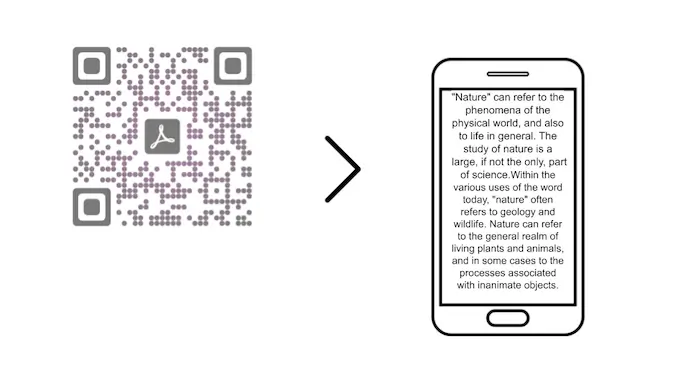
Just add an appropriate instruction (call-to-action statement) along with the QR Code. For example—Scan here to know more.
For example, the Fort Wayne Museum of Art, Indiana, uses QR Codes to provide information.
2. To share multimedia content
While text-based content is great, people also love multimedia content. In fact, many of them now prefer watching a video or listening to audio over reading plain text.
Then why not give your visitors the media they love? Here are three ways you can do it:
a. Show them videos
You can have AV rooms with large projectors to show videos to the visitors. But installing that set-up is quite expensive, right?
What you can rather do here is—create a Video QR Code and put it up near the point-of-interest.
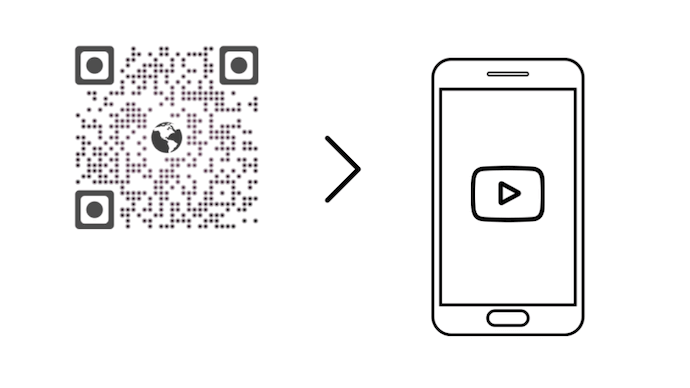
When scanned, it will take end-users to watch a video online.
This way, you can show the artist’s speech about this piece and the construction of the artifact. Or tell an anecdote about the same.
The Los Angeles County Museum of Art is already using this technique to engage its visitors.
b. Show them images
Many museums prohibit photography/video recording of the artifacts. Yet you can help visitors get these images on their phones. Or even labeled images of artifacts. How? Via an Image QR Code.
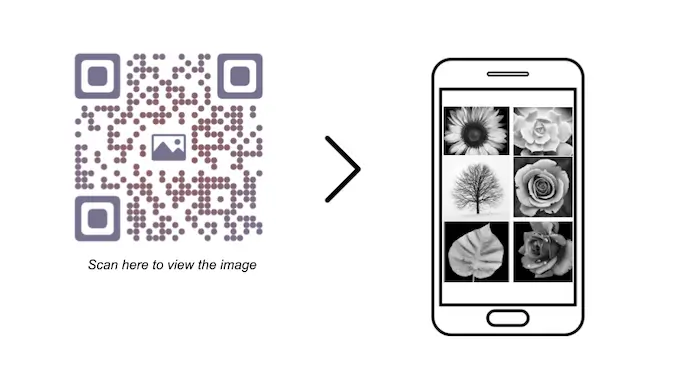
When scanned, it will help them see the encoded image on their phones.
Similarly, you can also store an image showing maps or the museum layout in the QR Code to help your visitors.
c. Provide audio tours
Just like an image or a video, you can also store an audio file in QR Codes. What will it do? A lot!
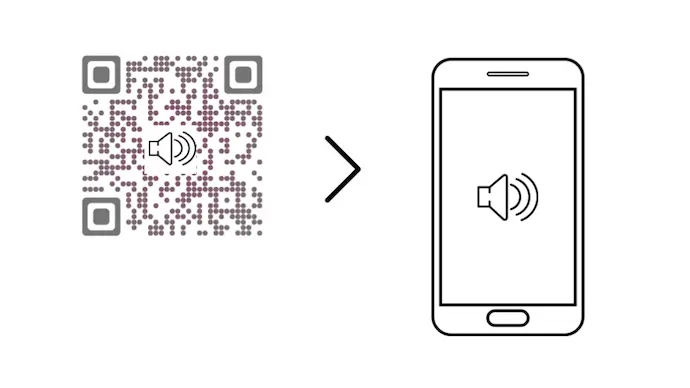
It can guide people about the do’s and dont’s and state the rules and regulations of the museum. Just place this QR Code near the entry of the museum. With an appropriate CTA such as—Scan before you go ahead.
You can also use an Audio QR Code to provide audio information about an artifact. No need for audio guides.
It will be especially useful for people who cannot read or see.
Mark McEachern, Executive Director, Torrington Historical Society, said:
“The audio tour is an initiative that allows residents and visitors to use audio recordings to explore the history of many buildings and sites in the downtown historic district,”
In Nov 2016, Torrington Historical Society, installed QR Code plaques across 21 historical sites.
The Museum of London also deploys QR Codes to entertain and enlighten visitors.
3. Get them to play games
Everybody loves playing games irrespective of the age group. And getting people to scratch their heads a little is a great way to keep them engaged.
To do it, you can use QR Codes to organize various games. They will make visitors’ experience fun-filled and memorable.
For example, many museums like Arizona State museum organize scavenger hunt to engage young visitors.
4. Get them to submit their feedback
People have visited the museum. And you should now ask them for feedback. It will help you understand what you’re doing right. And where you need to make improvements.
But getting them to submit a review will not be easy. To do it, they’ll have to follow a series of instructions. This needs effort and hence, many of them will simply skip doing it.
So make it easier for them to submit a review. How? Using a Google review QR Code.
When scanned, it will take users to submit their reviews online in two easy steps—Scan and Submit. That simple!
B. How to create QR Codes for your museum
You know how QR Codes can help you enhance the visitor experience in museums. And now the question is—how to create them?
You first have to decide whether you want to create QR Codes one-by-one or in bulk.
1. Creating QR Codes one-by-one
If the number of QR Codes is less, you can create them individually using an online QR Code generator. And to find the best one for your use case, you can go through this detailed comparison chart of the top QR Code generators.
Once you decide on which QR Code generator to use, the next step is to create one.
Using Scanova for a demo, here’s how you can do it:
1. Go to Scanova and sign up for a 14-day free trial. Next, select the QR Code of your interest
For example, if you want to store a map, select the Google map QR Code. If you want to add a website link, select Website URL QR Code. When scanned, it will show the encoded text.
2. Once you decide the category, add the relevant information. For example, add website URL for Website URL QR Code
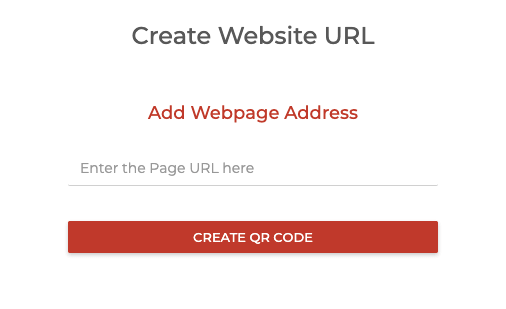
3. Next, click on Create QR Code
4. Name and save your QR Code on the window that you will be directed to. Click on Save
5. You will be prompted to three QR Code design options: Standard black-and-white, custom with logo, and custom with background design. You can proceed with any of the options
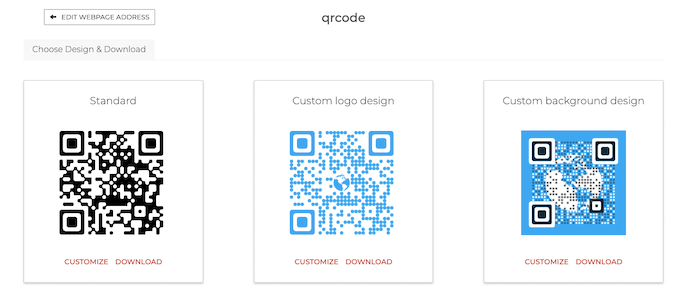
Note that people are more likely to scan a customized QR Codes over a standard black-and-white one. To attract scans, personalize your QR Codes.
6. Once your QR Code is ready and there are no more changes to be done, click Update and Download it
7. Specify QR Code image size and format on the window that will prompt. Click on Export.
Your QR Code will be created.
2. Creating QR Codes in bulk
If the number of QR Codes that you wish to create is high, it’ll be difficult creating them individually.
You can now create a Website QR Code, serial code QR Code, Text QR Code and V card QR Code in bulk.
You can do so with the help of a bulk QR Code generator. Here we are using QR Batch for demo purposes.
1. Create a spreadsheet for the data you want to encode in the QR Code.
For more details of how to encode data in a spreadsheet, click here
2. Download the spreadsheet in any format ( CSV, XLS, or XLSX format ).
3. Go to QR Batch and select the option that suits you best ( website URL, serial code or simple text ).
4. Upload the spreadsheet and review the data
5. You can customize your QR Code by changing its background design, color, eye patterns, data modules etc.
For example, you can put the image of your museum’s building in the background
6. Make payment
7. Download the bulk of QR Codes
If you want more details on how to work with QR Batch, click here
That’s all you need to know about QR Codes in museums. QR Codes will make the place more enjoyable and engaging. With a plethora of advantages, QR Codes can make the visitor experience in museums worth memorizing.

Good Summary and helpful examples. Stqry looks interesting although a few months after your post date, they have launched in only three cities by the looks of it.
[…] When I was a child, the Museum of Natural history provided visitors with handheld audio guides with headphones that could be dialed in to each exhibit. That was the coolest thing to a kid of the 50’s! Since then, digital technology has opened up interactive possibilities that extend beyond museum walls […]